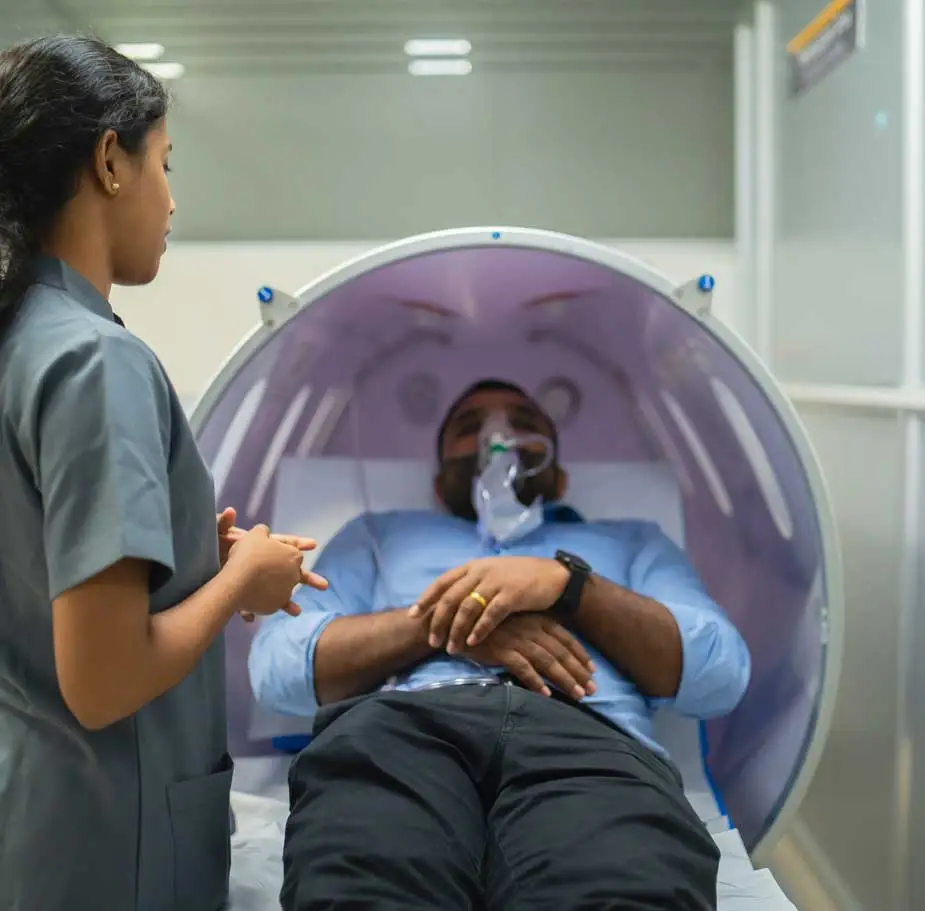Diabetic Foot Ulcers
Symptoms
Symptoms of Diabetic foot ulcers may include:
Persistent pain or discomfort
Redness or inflammation
Open sores or wounds
Warmth in the affected area
Fluid retention or swelling
Drainage of pus or foul-smelling fluids
Changes in skin color or texture
Difficulty walking or putting weight on the foot
Numbness or tingling
Slow healing of wounds or infections
Causes
Causes for Diabetic foot ulcers may include:
Diagnosis
Diagnosis for Diabetic foot ulcers may involve:
Treatments
A diabetic foot ulcer is a chronic wound that develops in individuals with diabetes, often due to poor circulation and nerve damage which can badly affect the quality of one’s life. It results from minor injuries that go unnoticed, leading to infection and potential amputation risk. Management involves controlling blood sugar, proper wound care, and addressing contributing factors for early intervention and prevention.
Our Wound Healing Program integrates hyperbaric oxygen therapy (HBOT) to accelerate healing. Complemented by targeted exercises, lifestyle management, and diet guidance, our approach aims for comprehensive diabetic foot ulcer treatment. HBOT enhances tissue repair, exercises promote circulation, lifestyle adjustments reduce risks, and nutritional support aids overall health, ensuring a well-rounded strategy for optimal outcomes.

Wound Healing Treatment
Wound healing treatment using Hyperbaric Oxygen Therapy (HBOT) has been proven to be effective in promoting the healing of diabetic wounds and other chronic wounds. Maana Health’s holistic approach to wound healing, which combines HBOT with exercise and rehabilitation, lifestyle management, and diet and nutrition management, is unique and highly effective. By addressing the underlying causes of slow wound healing, such as poor circulation and high blood sugar levels, Maana Health’s approach not only promotes faster healing but also helps to prevent the need for amputation in several cases. This comprehensive approach to wound healing sets Maana Health apart from other treatments and provides patients with a more effective and sustainable solution for their chronic wounds.
